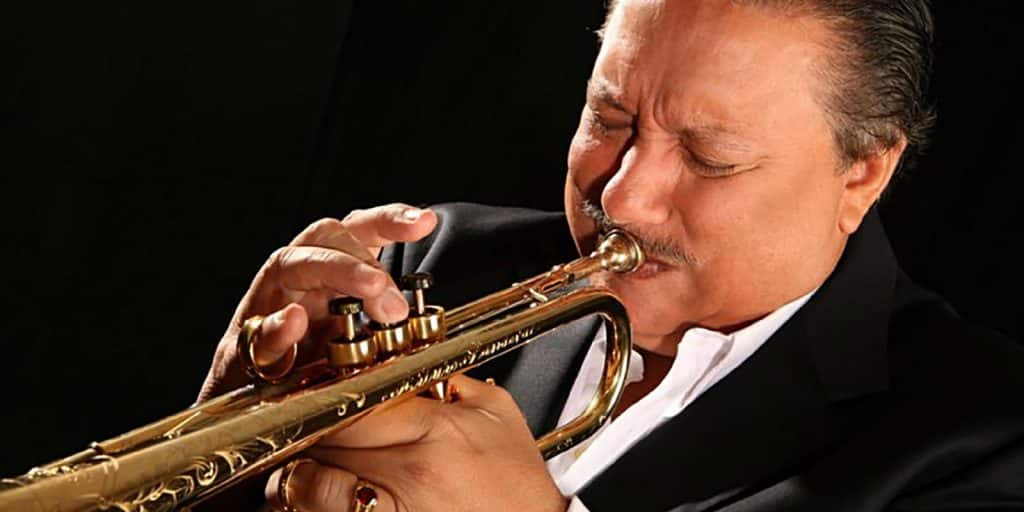Cuban jazz legend, trumpeter Arturo Sandoval plays the Blue Note in Greenwich Village, NYC, Wednesday-Sunday, December 4-8, 2019 at 8pm & 10:30pm. From $30
Arturo Sandoval is a legendary Cuban jazz man
Sandoval is from Artemisa, Cuba. He grew up playing trumpet on the street.
In 1973, he became part of Irakere, the legendary Cuban bebop rock band that got away with playing “Yankee Imperialist” music by using African percussion and calling it Cuban folk.
Irakere was founded by Chucho Valdés and included Paquito D’Rivera. Can you imagine Valdés, Sandoval and D’Rivera in one band?
This was probably the seminal band of Cuban timba, the evolution of Cuban dance music of the 1950s which became New York salsa in the 1970s, but kept evolving independently in Havana.
Jazz legend Dizzy Gillespie got interested in Latin music in the 1940s when Latin musicians would go to Harlem to swing, and African musicians would go to East Harlem for the Latin jazz. The mix also happened down at the Village Gate which is now Le Poisson Rouge.
When Dizzy took a jazz cruise to Cuba in 1977, he met Sandoval and became Arturo’s mentor. Sandoval toured with Dizzy and while touring with the United Nations Orchestra Sandoval defected in 1990.
Sandoval also performs as a soloist with orchestras around the world.
Danzón
Sandoval’s 1993 album Danzón won a Grammy. His song on that album A Mis Abuelos (to my grandparents) is one of Arturo’s signature pieces. Dear Diz (Every Day I Think of You) from 2012 is another.
Danzón is the European court dance that became the first international social dance. People loved it because you formed a circle, danced figures with your partner ,and then rotated to the next partner so everyone got to dance. It is how social dancing is taught today, “change partner.”
It began as a courtly dance. In England the courtly tradition mixed with rural forms as Country Dance. That became the French Contredance in the court of Louis XIV, Spanish Contradanza, Cuban Danzón and folk dancing in the United States.
Outside of Cuba it was called the Habanera (the way they dance in Cuba). It is the root of Argentine tango because Cuba blends Spanish and African, and tango is African.
It looks like a foxtrot (two-step) that is almost a tango.

